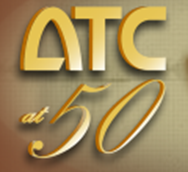|
For More Information, Contact: |
The Building Seismic Safety Council (BSSC) and the Applied Technology Council (ATC) are pleased to announce a series of two-day regional training seminars to introduce the recently completed NEHRP Guidelines for the Seismic Rehabilitation of Buildings and its Commentary (FEMA 273 and 274 documents). The seminars will be conducted in as many as 19 cities throughout the nation between November 1998 and April 1999. The first nine seminars will be held in Charleston, Los Angeles, New York, Portland, St. Louis, Salt Lake City, San Diego, San Francisco/Oakland, and Seattle.
The seminar program has been developed for practicing structural and civil engineers, architects, seismic engineering educators and students, building regulatory personnel, and other technical design professionals. The two-day seminar program includes 12 hours of presentations on the following topics:
- Issues in seismic rehabilitation
- Overview of the Guidelines and new seismic hazard maps
- Simplified Rehabilitation-overview and example applications
- Structural dynamics and relationship of nonlinear analysis to economical rehabilitation-Concepts and basics for introduction to systematic Rehabilitation
- Systematic Rehabilitation-Overview and general discussion
- Systematic Rehabilitation-Modeling and analysis
- Systematic Rehabilitation-Foundations and geotechnical considerations
- Rehabilitation of nonstructural elements
- Systematic Rehabilitation-Examples of applications to steel buildings
- Systematic Rehabilitation-Examples of applications to masonry buildings
- Systematic Rehabilitation-Examples of applications to concrete buildings
- Systematic Rehabilitation-Examples of applications to wood buildings
Each seminar will include presentations by individuals specially selected because of their technical expertise and their ability to effectively convey technical information to large audiences. The seminars are being co-sponsored by local structural engineers associations and/or local chapters of the American Society of Civil Engineers. For further information, contact: ATC-33-1 Project, Applied Technology Council, 555 Twin Dolphin Drive, Suite 550, Redwood City, CA 94065; Phone: 650/595-1542; Fax: 650/593-2320; e-mail, This email address is being protected from spambots. You need JavaScript enabled to view it.. Registration forms can be downloaded from ATC's web site (www.atcouncil.org).





 The first Applied Technology Council Awards Dinner, held on July 18th, 1998 at the San Francisco Marriott was conceived to honor certain ATC project participants for extraordinary service on completed ATC projects. For the first Awards Ceremony, two award categories were defined. The "ATC Award for Excellence"--ATC's premier award--recognizes individuals for extraordinary achievement in a given technical area or other ATC activity. The second Award category recognizes "Significant Contributions" on a major ATC project. In selecting award winners, the ATC Awards Committee considered participants in all completed ATC projects since its inception in the early 1970's. Staff and Directors involved in the selection process were not eligible to receive an award.
The first Applied Technology Council Awards Dinner, held on July 18th, 1998 at the San Francisco Marriott was conceived to honor certain ATC project participants for extraordinary service on completed ATC projects. For the first Awards Ceremony, two award categories were defined. The "ATC Award for Excellence"--ATC's premier award--recognizes individuals for extraordinary achievement in a given technical area or other ATC activity. The second Award category recognizes "Significant Contributions" on a major ATC project. In selecting award winners, the ATC Awards Committee considered participants in all completed ATC projects since its inception in the early 1970's. Staff and Directors involved in the selection process were not eligible to receive an award. The Applied Technology Council (ATC) and Multidisciplinary Center for Earthquake Engineering Research (MCEER) are pleased to announce the ATC-29-2 Seminar on Seismic Design, Performance, and Retrofit of Nonstructural Components in Critical Facilities, the third in a series of ATC/MCEER seminars on this subject first held in October 1990. Funded by the National Science Foundation, the purpose of the Seminar is to present current research, practice, and informed thinking pertinent to seismic design, performance, and retrofit of nonstructural components and distribution systems in buildings, with a special focus on critical facilities. The seminar components and systems include: supports and bracing for elevator systems, ceilings, partitions, cladding, glazing, contents, water piping systems, and mechanical and electrical equipment. Nonstructural components or systems in facilities with critical functions (e.g., computer centers, hospitals, manufacturing plants with especially hazardous materials, museums with fragile/valuable collection items) are of special interest.
The Applied Technology Council (ATC) and Multidisciplinary Center for Earthquake Engineering Research (MCEER) are pleased to announce the ATC-29-2 Seminar on Seismic Design, Performance, and Retrofit of Nonstructural Components in Critical Facilities, the third in a series of ATC/MCEER seminars on this subject first held in October 1990. Funded by the National Science Foundation, the purpose of the Seminar is to present current research, practice, and informed thinking pertinent to seismic design, performance, and retrofit of nonstructural components and distribution systems in buildings, with a special focus on critical facilities. The seminar components and systems include: supports and bracing for elevator systems, ceilings, partitions, cladding, glazing, contents, water piping systems, and mechanical and electrical equipment. Nonstructural components or systems in facilities with critical functions (e.g., computer centers, hospitals, manufacturing plants with especially hazardous materials, museums with fragile/valuable collection items) are of special interest.